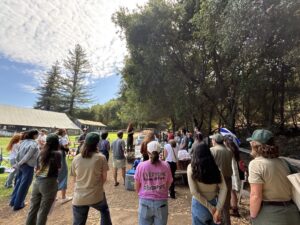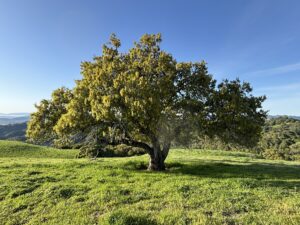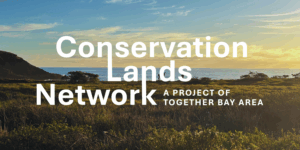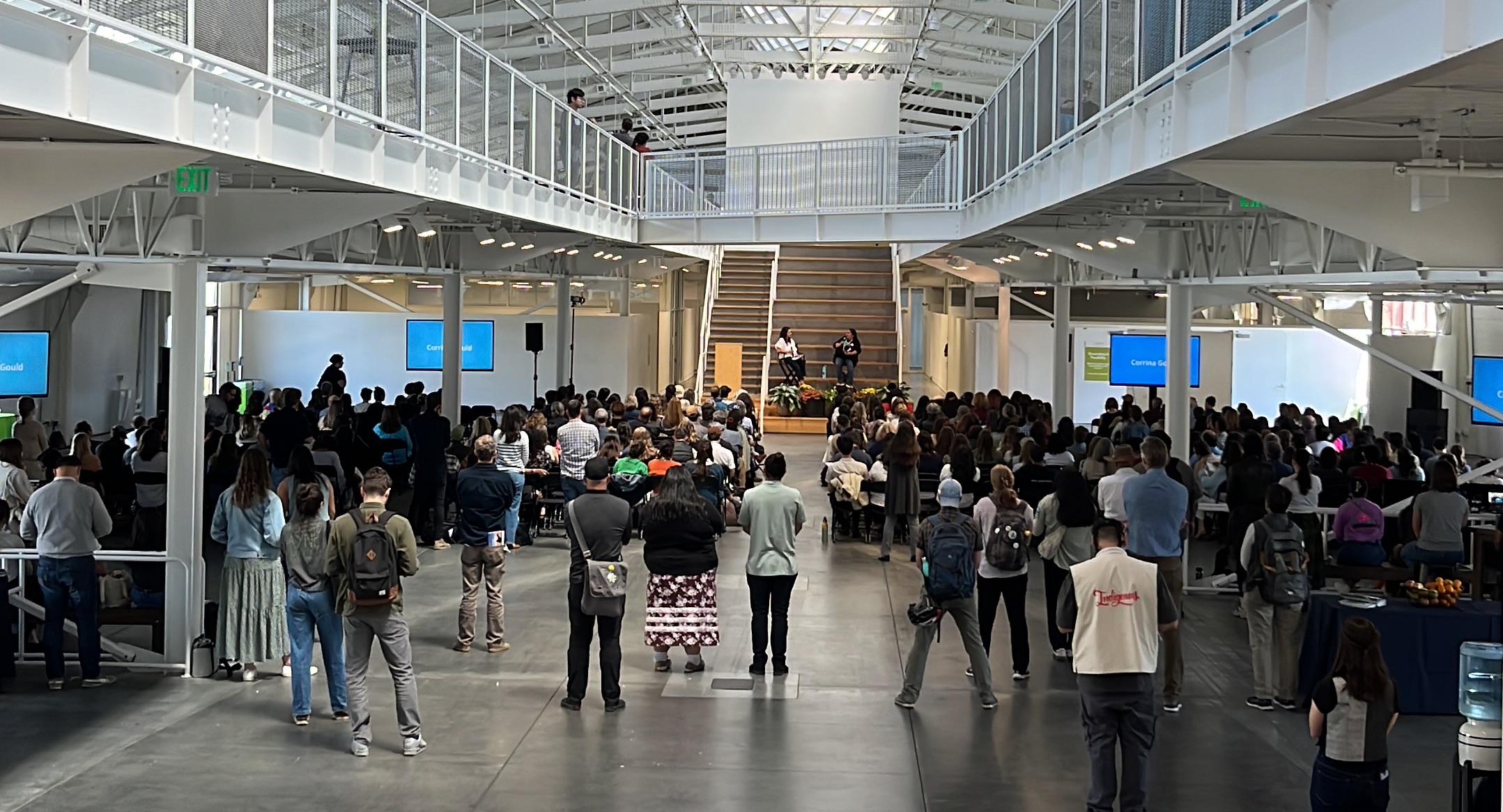
Starting the conversation on stewardship – and where we go from here
By Tom Robinson, Director of Conservation Strategy, TOGETHER Bay Area
At the Together Conference on May 14th, I moderated a breakout session titled “Tracking What Matters: Can mapping, measuring, and monitoring capture all of Stewardship?” It was a session meant to spark a regional conversation that is long overdue about how we elevate land stewardship as a core function of conservation alongside land protection in our regional goals and planning tools within the Conservation Lands Network (CLN).
The room was full – about 90 people – and the energy was curious and engaged. Together, we explored one of the core questions behind an upcoming Conservation Lands Network 3.0 update: Can we track stewardship in meaningful ways across the region? We heard from Dina Robertson (East Bay Regional Park District), Aviva Rossi (San Francisco Estuary Institute, Wetlands Regional Monitoring Program), and Danny Franco (Golden Gate National Parks Conservancy), each of whom brought thoughtful perspectives on what stewardship looks like on the ground, what tools and metrics are emerging, and how collaborative networks help make it all possible. We had a rich discussion as a group. Folks shared ideas and asked probing questions. Most centered around what’s already being done, what data exists that can be helpful, and how to bring storytelling and relationships into the same frame as quantitative data. We set out to be honest and transparent about the challenges we face in doing this work at scale. I think people felt those challenges.
Since the conference, I’ve heard from folks in the room that they left the session feeling overwhelmed and confused. Some questioned whether we need to include stewardship in CLN 3.0. I appreciate this question, and I understand the response to what was presented and discussed. I want to share a perspective on the importance of engaging in the conversation about stewardship at the regional scale, and what the CLN 3.0 project will do to advance this conversation.
The “Why?”
For many years, conservation practitioners have been asking TOGETHER Bay Area, and our predecessor the Bay Area Open Space Council, to elevate the need to prioritize land stewardship. We’re all aware that simply drawing a line on a map around a place doesn’t guarantee its long-term ecological resilience. Protecting land is a key step to ensuring habitats exist for flora and fauna to thrive. An equally important step, which is more complex and is required in perpetuity, includes the ongoing work of care, restoration, management, and relationship – in other words, stewardship. On public and private land. We, as a region, have been struggling to figure out how to do this at the regional scale. It’s challenging to do.
Integrating stewardship more meaningfully into the Conservation Lands Network’s framework isn’t just a nice-to-have, it’s an ethical and strategic necessity. The CLN is already a trusted tool for regional planning and local decision-making, and the vast majority of its map, data, and web content is geared toward land protection. Stewardship is highlighted in the CLN 1.0 and CLN 2.0 reports, but there’s more to do. We have a responsibility to reflect a more complete picture of what conservation really takes for biodiversity to thrive.
We’re Just Getting Started
The breakout session at the Together Conference wasn’t designed to present a finished solution. It was designed to open a space, a space for this community, full of people who care about the land and the work of stewardship, to step into the messy, important questions we have about incorporating stewardship more meaningfully into the CLN:
- Can we track what matters, when so much of what matters isn’t quantifiable?
- How do we elevate people, relationships, and care – not just acres and metrics?
- How do we tell the stories of stewardship in ways that are rigorous, rooted, and inspiring?
These are hard questions. And they land in a hard moment. The political realities here in the U.S. and across the globe have many people feeling overwhelmed or even hopeless. In that context, naming the challenges without offering a hopeful counterbalance may have felt like adding more weight to an already heavy load.
I want to clarify what I meant to convey: not heaviness, but an invitation.
What We Do Now
If stewardship is fundamentally about reciprocal care (between people and land) then our treatment of it in our regional conservation framework must also be reciprocal. We don’t just raise problems and challenges; we build solutions together. And we already have the raw materials to begin.
As we undertake the CLN 3.0 project, there are at least five actions we can take to explore how stewardship fits with the CLN suite of tools and deliverables. These actions include:
- Define stewardship collaboratively. The next phase of CLN 3.0 will invite land managers, funders, scientists, and practitioners to shape how stewardship is defined in a regional framework like the CLN and explore setting stewardship-specific regional goals.
- Strengthen the case for funding. CLN is frequently used to support land acquisition funding. By integrating stewardship more fully, we can begin to do the same for stewardship funding – bringing visibility, rigor, and legitimacy to the work already underway.
- Build storytelling into our data infrastructure. Metrics matter. But so do narratives. Let’s elevate stewardship in CLN 3.0 in a way that honors both.
- Spotlight the practitioners. From community-based stewardship groups to agency-wide land care initiatives, we need to make visible the full range of stewardship happening in our region.
- Support participation, not just reporting. If we want better data on stewardship, we need to reduce the barriers for those doing the work to contribute and benefit from what’s being built.
- Celebrate early wins. We don’t have to wait until the perfect mapping, measuring, and monitoring system is in place. Let’s recognize and amplify what’s working now.
Centering Process
As we move forward, we’re making a conscious choice: to center the collaborative and creative process – not just charge ahead to createward new datasets, maps, or tools.
Yes, CLN 3.0 will result in updated content for our online tools. But first and foremost, it will be a process of listening, co-creating, and learning together. That means:
- Creating space to surface the diverse ways stewardship is practiced and understood.
- Valuing relationships and shared purpose as much as spatial and quantitative outcomes.
- Working with practitioners, storytellers, data folks, and community leaders, not just around them, to define what this network needs to reflect.
We’re not just building a tool. We’re building alignment, vision, and trust – the groundwork for something meaningful and lasting.
To those who left the session feeling disheartened or uncertain: I hear you. And I hope you’ll stay in the conversation.
Let’s turn uncertainty into co-creation. Let’s shape a stewardship message in the CLN that reflects not only what we’re measuring, but who we are.
Join us.
You’re invited to email me at [email protected] to share your reactions, questions, and ideas. And you’re invited to sign up for the CLN mailing list to receive updates on the project. There will be opportunities in the coming months to share ideas and input, and we’d love to hear from you. You’ll receive notifications of those opportunities by joining the CLN mailing list.
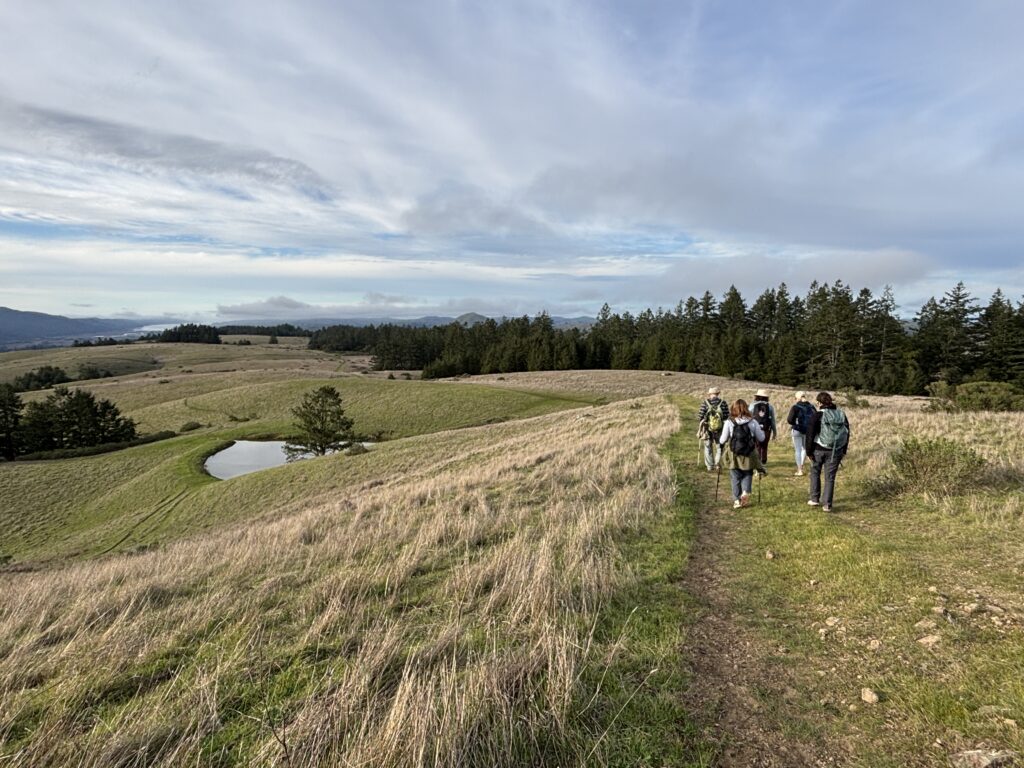
Looking north on the Bolinas Ridge in Marin County.

